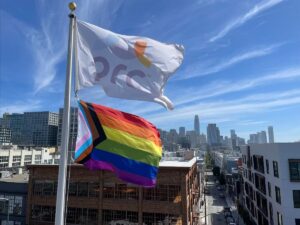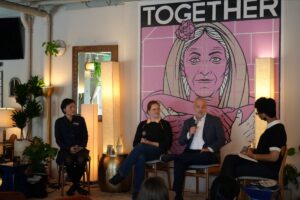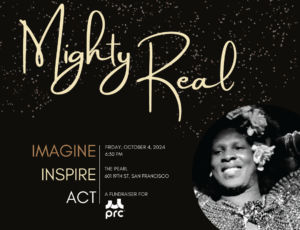“This can be one of the most important roles we play in someone’s life.”
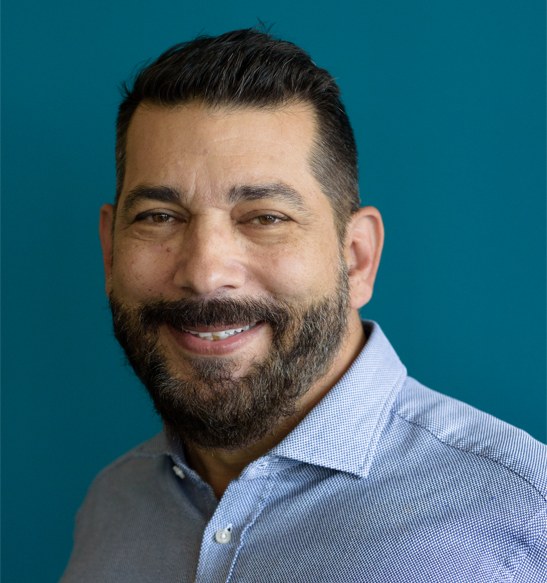
To say that we’re fortunate to have Joe Ramirez-Forcier managing PRC’s Workforce Development Program would be a massive understatement. His compassion and work ethic goes above and beyond as he navigates the complex situations many of our clients face, and he does this with an incredibly welcoming smile and a calming demeanor. We sat down with him recently to get to know more about him and the work he does at PRC, and we’re certain you’ll admire him as much as we do.
A true San Francisco native, Joe lived through the HIV/AIDS epidemic of the 1980s and experienced firsthand the decimation it caused to his hometown, his friends, and his community. He watched as those around him became fewer and fewer, instilling in him the value of life and a duty to live his to the fullest. Not one to sit back and watch, he’s been volunteering ever since, working with people in end-of-life care and helping medical professionals to find critical resources for supportive services. Today he continues serving his community by way of helping PRC’s clients navigate a path to a more promising future.
How did you find yourself at PRC?
“It was unplanned. I was working in tech, and about 20 years ago I had an epiphany and decided to work in the nonprofit sector. Eventually, I mapped my skills and began helping people with HIV, mental health, and substance use both in treatment and in residential settings, and now I work in workforce development.”
You’re coming up on your 16-year work anniversary with PRC. How does it feel to know that you’ve been assisting clients for that long?
“I’m all about the now. It’s my role and it doesn’t matter what I did yesterday. There’s always someone in front of us today who needs our support. I really believe in steward leadership: that it’s my role to serve. Whether it’s with a client or with my staff, I think, ‘how are you?’ and ‘how can I support you today?’ You really only have today and the folks in front of you. I think staying present and oriented toward others is very important in this work.”
How has PRC changed in the past 16 years?
“We continue to expand and define our roles and our capacities in community work. When I started, we had three public funding contracts supporting our services. Now we have 16 government contracts and grants. All of this shows that we are committed to providing a variety of services for people who really need them. This is why I come into work every day. I know we have something to offer that really does benefit people.”
How have things changed due to the COVID-19 pandemic?
“We’re in people services so when you put Zoom in the middle, we’re not engineered as humans to connect through a flat-screen. Communication by its nature is rounded by body posturing and closeness, the three-dimensional aspect of a person right in front of you. Especially for clients experiencing the intersection of homelessness, substance use, HIV, and mental health, the power of being together in person is so strong. Zoom is a poor substitute to his, yet currently an essential substitute, and it has changed the way we communicate immensely. Things don’t move as quickly. People don’t mentally process as quickly. And that means we need to do things differently. We’ve had to re-engineer how we deliver our program multiple times since the beginning of the pandemic. But we’ve been able to serve the same number of clients, which I’m really proud of.
“In the first year of the pandemic, we were able to get digital devices to clients so they could continue our computer training and peer-to-peer classes. It was clear that our clients didn’t have computers or Wi-Fi, which is necessary to access our services. While distributing computers, if our students didn’t have a mask, we’d give them a couple because they were really hard to get at the time. That above and beyond service lifted our hearts during a really challenging time. After all, we were all coping with the pandemic together at the same time.”
For someone who’s unfamiliar, could you explain what workforce development is?
“We work with a population that has gone through life experiences like becoming ill with HIV, dealing with substance use, and handling with severe mental health struggles. And similar to rehabilitation for a broken limb, a traumatic event, or a setback, it takes an extended period of time to regain one’s health. That’s the essence of vocational rehabilitation and the process that takes place in workforce development. We get a chance to have a really meaningful conversation about their abilities, strengths, hopes, and dreams, in order to build up hope they see their value and self-worth. Helping someone with their resume is one of our strongest counseling tools to convey how valuable someone is as a person. When you think of all the stigma where society or their family hasn’t valued them, it’s a chance to change that narrative. Then we embark on training to build confidence, skills, comprehension, and knowledge. Clients can then decide if and when they’re ready to try out a volunteer or internship role based on how it aligns with their abilities, their goals, and their income needs. This allows them to make really informed choices.”
Can you tell us more about how Workforce Development has evolved?
“We’ve added so many new computer training classes: supplementing Microsoft Office with administrative skills training and the Lift UP SF program, our peer-to-peer training for jobs in community health settings. With our new funding from the City’s Dream Keeper initiative dedicated to services for the Black Trans community, we’ve enhanced our trainings with Black/African American competency based on culture, health, community voices. At the end of the day, we are a post-secondary education facility, and for our computer training classes, we are a recognized training provider by EDD CA as California’s Eligible Training Provider. We look ahead to where there are job opportunities and develop certificate programs based on the labor market. We’re constantly challenging ourselves to focus on our mission, scope, and strategies to get our clients to where they need to be in the future and how we can enhance what we’re doing today.”
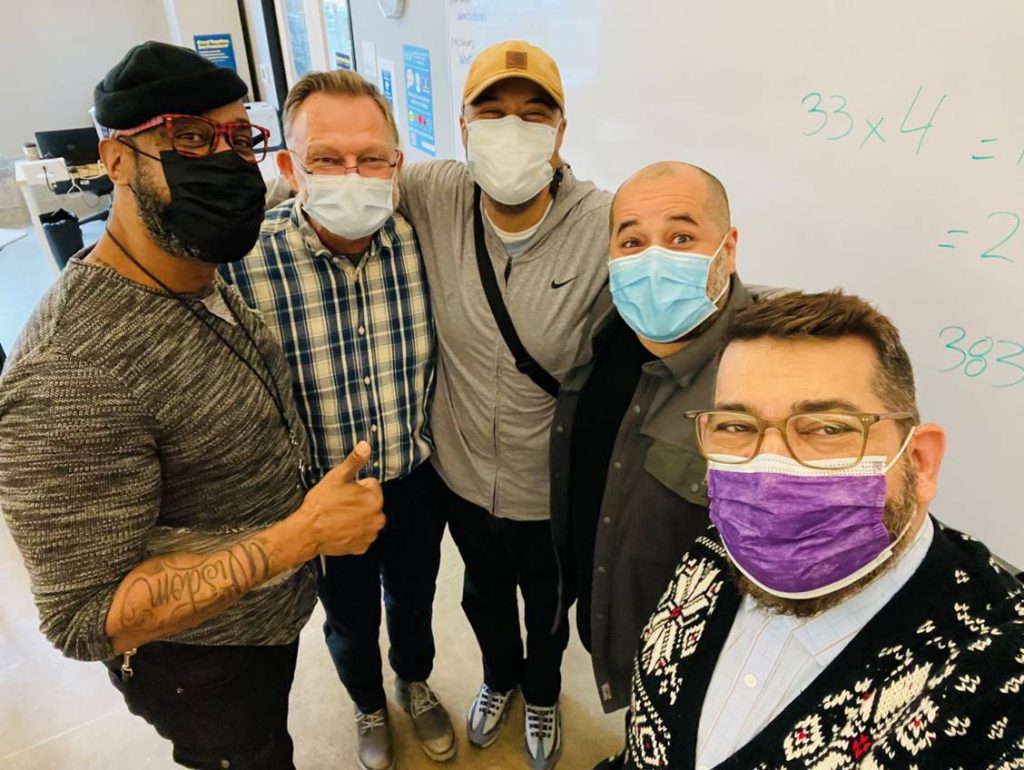
For those who aren’t able to attend the courses on a regular frequency or cadence, how are you able to help them get through the programs?
“There have been a lot of stressors in the past year, and we’ve really challenged our training department to say we can’t let these people fail. We’ve contacted folks who weren’t able to complete our coursework to extend a distance learning option and get them back in classes. For people who are working, we’re piloting an extended learning platform. That should help students have a chance to matriculate and also let them know that lifelong learning can be viewed differently, and they can succeed. For some, this will be their first success.”
Many of your staff have a similar “lived experience” and personal history as your clients. How has this affected Workforce Development?
“A shared ‘lived experience,’ or personal knowledge of the world gained through direct, first-hand experience, has certainly helped. In fact, it can be essential in finding success within our local communities. Whether it’s treatment, health care, or something else, this shared experience helps articulate the support we can offer. When we reveal parts of our past or say yeah, ‘I’ve been through that too,’ this makes a big difference. There’s a therapeutic effect of saying: ‘you’re not alone,’ ‘you’re not the only one who’s gone through this,’ ‘it does get better, so don’t give up.’ Having someone believe in us is so important. Many of the people we see don’t have anyone else in their lives. Sometimes we’re the only ones cheering them on. This can be one of the most important roles we play in someone’s life.”
For clients who have gone through the programs and graduated, what kind of follow-up services do they have access to?
“They can see us whenever they choose to. Once a client gets a job, housing, or health care, if they want to pause and take a break, we give them that space, and the door is always wide open. For our clients with HIV, they’ll need lifelong services, which can include retirement planning, relocating to a senior living facility, or selecting a new doctor in a new city if they relocate. There aren’t a lot of places clients can go for HIV and workforce development, much less substance use and mental health, that are accessible whenever they need it. Fortunately, we have funding to support folks along that continuum to make sure they have the support whenever and however they need.”
What other new challenges or problems have you faced?
“We’ve generally helped a certain cohort of people over the years but the population has aged and the demographics have changed. In our latest outreach, we’ve begun to dive deeper into the African American community, particularly to Black Trans Women. There’s a great need and an awareness to adapt our programs to support them and help them to be successful.
“For others who have been institutionalized for a long time, we ask: what does independent living and learning look like? Social skills and independent living skills take on greater meaning. We have had to rethink and adapt to these populations that are so worthy and so needing of our services. It’s important for us to continue to research and make sure we’re really helping them, that we understand the services that exist in the community to support them, and that we offer them the same opportunities that everyone else has.
“A lot of justice-involved people are so vulnerable and have stories of being victims of human trafficking at a very young age, which creates a lot of trauma. The work they were forced into against their will, sometimes by their own family members, puts them at risk of being institutionalized. Their stories are unfathomable. These are very bright individuals who are so deserving of getting the richness of our services. We’re partnering with the TGI Justice Project, which is there to meet these individuals when they are released from incarceration and there’s no one else there to support them. We’ve been collaborating with them to ensure these new clients gain access to our on-site
It sounds like you’ve become quite adept at personalizing your services to a wide range of clients’ needs.
“It’s really adapting to what’s happening on the ground, understanding how systems fail folks, and making sure we don’t recreate that cycle of failure.”
How flexible are your 16 contracts and grants in supporting all these different programs to serve clients in their current circumstances?
“The contracts and grants allow us to make the right decisions we need to in a process called localizing. We analyze what’s happening to the people who need our services. The key is adapting these services so people can access them. The City loves to learn about our techniques, creativity, and innovation in identifying different ways we can deliver essential services so our clients can flourish economically. The end goal is that they get the benefit of our services.”
Is there anything else you’d like our readers to know?
“In 2021 there was a City-wide workforce program assessment for serving individuals experiencing homelessness. I think it’s important to know that PRC was invited to the table. I was able to provide input and help design a system where we don’t simply look at housing as the only solution for homeless folks, as they may not get housing for many years. There is a multitude of essential services that should be triaged for homeless individuals, including referrals to health care and services related to recovery, employment, and legal assistance. The final result of this project was the documentation of best practices for connecting people experiencing homelessness to workforce and employment services across the City.
“At any given time, we have clients living at shelters who are enrolled in our programs, and we want to make sure that they’re invited to and welcome at our services. There are multiple pathways to stabilization in the City of San Francisco. I was overjoyed that this became a standard of care and a guiding principle. I hope it will inform people in the future of a better system when assessing those experiencing homelessness for support services.”
How do you feel that San Francisco is performing in assisting these people in general?
“If it was easy to do, someone would have mastered it. There’s no silver bullet. It requires a fully integrated, engaged system of care with sufficient support. There’s data out there to demonstrate that historically we haven’t had enough funding for social services, much less the housing to stabilize individuals. In America’s largest cities, we have a Herculean task, but it’s a task worth doing.”
If you enjoyed reading about Joe and PRC’s Workforce Development Program, consider supporting this work with a charitable contribution. You can also read additional stories about PRC’s clients and staff on our blog.

